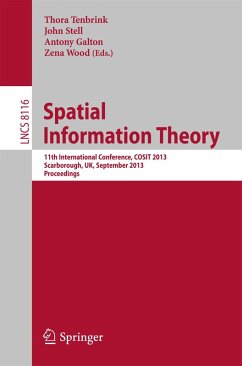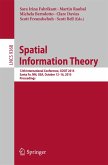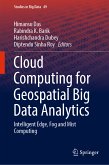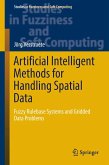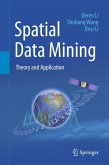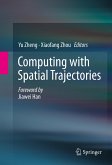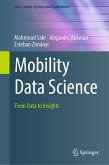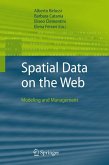Spatial Information Theory (eBook, PDF)
11th International Conference, COSIT 2013, Scarborough, UK, September 2-6, 2013, Proceedings
Redaktion: Tenbrink, Thora; Wood, Zena; Galton, Anthony; Stell, John
40,95 €
40,95 €
inkl. MwSt.
Sofort per Download lieferbar

20 °P sammeln
40,95 €
Als Download kaufen

40,95 €
inkl. MwSt.
Sofort per Download lieferbar

20 °P sammeln
Jetzt verschenken
Alle Infos zum eBook verschenken
40,95 €
inkl. MwSt.
Sofort per Download lieferbar
Alle Infos zum eBook verschenken

20 °P sammeln
Spatial Information Theory (eBook, PDF)
11th International Conference, COSIT 2013, Scarborough, UK, September 2-6, 2013, Proceedings
Redaktion: Tenbrink, Thora; Wood, Zena; Galton, Anthony; Stell, John
- Format: PDF
- Merkliste
- Auf die Merkliste
- Bewerten Bewerten
- Teilen
- Produkt teilen
- Produkterinnerung
- Produkterinnerung

Bitte loggen Sie sich zunächst in Ihr Kundenkonto ein oder registrieren Sie sich bei
bücher.de, um das eBook-Abo tolino select nutzen zu können.
Hier können Sie sich einloggen
Hier können Sie sich einloggen
Sie sind bereits eingeloggt. Klicken Sie auf 2. tolino select Abo, um fortzufahren.

Bitte loggen Sie sich zunächst in Ihr Kundenkonto ein oder registrieren Sie sich bei bücher.de, um das eBook-Abo tolino select nutzen zu können.
This book constitutes the proceedings of the 11th International Conference on Spatial Information Theory, COSIT 2013, held in Scarborough, UK, in September 2013. The 28 papers presented in this book were carefully reviewed and selected from 62 full paper submissions. The following topics are addressed: spatial change, wayfinding and assistance, representing spatial data, handling language data, spatial language and computation, spatial ontology, spatial reasoning and representation.
- Geräte: PC
- ohne Kopierschutz
- eBook Hilfe
- Größe: 27.52MB
Andere Kunden interessierten sich auch für
![Spatial Information Theory (eBook, PDF) Spatial Information Theory (eBook, PDF)]() Spatial Information Theory (eBook, PDF)40,95 €
Spatial Information Theory (eBook, PDF)40,95 €![Cloud Computing for Geospatial Big Data Analytics (eBook, PDF) Cloud Computing for Geospatial Big Data Analytics (eBook, PDF)]() Cloud Computing for Geospatial Big Data Analytics (eBook, PDF)129,95 €
Cloud Computing for Geospatial Big Data Analytics (eBook, PDF)129,95 €![Artificial Intelligent Methods for Handling Spatial Data (eBook, PDF) Artificial Intelligent Methods for Handling Spatial Data (eBook, PDF)]() Jörg VerstraeteArtificial Intelligent Methods for Handling Spatial Data (eBook, PDF)73,95 €
Jörg VerstraeteArtificial Intelligent Methods for Handling Spatial Data (eBook, PDF)73,95 €![Spatial Data Mining (eBook, PDF) Spatial Data Mining (eBook, PDF)]() Deren LiSpatial Data Mining (eBook, PDF)65,95 €
Deren LiSpatial Data Mining (eBook, PDF)65,95 €![Computing with Spatial Trajectories (eBook, PDF) Computing with Spatial Trajectories (eBook, PDF)]() Computing with Spatial Trajectories (eBook, PDF)53,95 €
Computing with Spatial Trajectories (eBook, PDF)53,95 €![Mobility Data Science (eBook, PDF) Mobility Data Science (eBook, PDF)]() Mahmoud SakrMobility Data Science (eBook, PDF)73,95 €
Mahmoud SakrMobility Data Science (eBook, PDF)73,95 €![Spatial Data on the Web (eBook, PDF) Spatial Data on the Web (eBook, PDF)]() Spatial Data on the Web (eBook, PDF)113,95 €
Spatial Data on the Web (eBook, PDF)113,95 €-
-
-
This book constitutes the proceedings of the 11th International Conference on Spatial Information Theory, COSIT 2013, held in Scarborough, UK, in September 2013. The 28 papers presented in this book were carefully reviewed and selected from 62 full paper submissions. The following topics are addressed: spatial change, wayfinding and assistance, representing spatial data, handling language data, spatial language and computation, spatial ontology, spatial reasoning and representation.
Hinweis: Dieser Artikel kann nur an eine deutsche Lieferadresse ausgeliefert werden.
Dieser Download kann aus rechtlichen Gründen nur mit Rechnungsadresse in A, B, BG, CY, CZ, D, DK, EW, E, FIN, F, GR, HR, H, IRL, I, LT, L, LR, M, NL, PL, P, R, S, SLO, SK ausgeliefert werden.
Hinweis: Dieser Artikel kann nur an eine deutsche Lieferadresse ausgeliefert werden.
Produktdetails
- Produktdetails
- Verlag: Springer International Publishing
- Seitenzahl: 538
- Erscheinungstermin: 20. August 2013
- Englisch
- ISBN-13: 9783319017907
- Artikelnr.: 43884942
- Verlag: Springer International Publishing
- Seitenzahl: 538
- Erscheinungstermin: 20. August 2013
- Englisch
- ISBN-13: 9783319017907
- Artikelnr.: 43884942
- Herstellerkennzeichnung Die Herstellerinformationen sind derzeit nicht verfügbar.
Spatial Change.- Spatial Primitives from a Cognitive Perspective: Sensitivity to Changes in Various Geometric Properties.- Transitional Spaces: Between Indoor and Outdoor Spaces.- Representing and Reasoning about Changing Spatial Extensions of Geographic Features.- Trust and Reputation Models for Quality Assessment of Human Sensor Observations.- Using Maptrees to Characterize Topological Change.- Wayfinding and Assistance.- Resolving Conceptual Mode Confusion with Qualitative Spatial Knowledge in Human-Robot Interaction.- Event Recognition during the Exploration of Line-Based Graphics in Virtual Haptic Environments.- Cognitive Transactions - A Communication Model.- Strategy-Based Dynamic Real-Time Route Prediction.- An Affordance-Based Simulation Framework for Assessing Spatial Suitability.- A Probabilistic Framework for Object Descriptions in Indoor Route Instructions.- Representing Spatial Data.- Linked Data and Time - Modeling Researcher Life Lines by Events.- Human Spatial Behavior, Sensor Informatics, and Disaggregate Data.- Comparing Expert and Non-expert Conceptualisations of the Land: An Analysis of Crowdsourced Land Cover Data.- Handling Language Data.- The Meanings of the Generic Parts of Toponyms: Use and Limitations of Gazetteers in Studies of Landscape Terms.- Creating a Corpus of Geospatial Natural Language.- Spatial Language and Computation From Descriptions to Depictions: A Conceptual Framework.- Reading Geography between the Lines: Extracting Local Place Knowledge from Text.- Modeling Spatial Knowledge from Verbal Descriptions.- A Computational Model for Reference Object Selection in Spatial Relations.- Fundamental Cognitive Concepts of Space (and Time): Using Cross-Linguistic, Crowdsourced Data to Cognitively Calibrate Modes of Overlap.- Spatial Ontology.- Kinds of Full Physical Containment.- A Vocabulary of Topological and Containment Relations for a Practical Biological Ontology.- A Geo-ontology Design Pattern for SemanticTrajectories.- Spatial Reasoning and Representation.- RCC and the Theory of Simple Regions in R2.- The Logic of NEAR and FAR.- The Topology of Spatial Scenes in R2.- Algebraic Properties of Qualitative Spatio-temporal Calculi.
Spatial Change.- Spatial Primitives from a Cognitive Perspective: Sensitivity to Changes in Various Geometric Properties.- Transitional Spaces: Between Indoor and Outdoor Spaces.- Representing and Reasoning about Changing Spatial Extensions of Geographic Features.- Trust and Reputation Models for Quality Assessment of Human Sensor Observations.- Using Maptrees to Characterize Topological Change.- Wayfinding and Assistance.- Resolving Conceptual Mode Confusion with Qualitative Spatial Knowledge in Human-Robot Interaction.- Event Recognition during the Exploration of Line-Based Graphics in Virtual Haptic Environments.- Cognitive Transactions - A Communication Model.- Strategy-Based Dynamic Real-Time Route Prediction.- An Affordance-Based Simulation Framework for Assessing Spatial Suitability.- A Probabilistic Framework for Object Descriptions in Indoor Route Instructions.- Representing Spatial Data.- Linked Data and Time - Modeling Researcher Life Lines by Events.- Human Spatial Behavior, Sensor Informatics, and Disaggregate Data.- Comparing Expert and Non-expert Conceptualisations of the Land: An Analysis of Crowdsourced Land Cover Data.- Handling Language Data.- The Meanings of the Generic Parts of Toponyms: Use and Limitations of Gazetteers in Studies of Landscape Terms.- Creating a Corpus of Geospatial Natural Language.- Spatial Language and Computation From Descriptions to Depictions: A Conceptual Framework.- Reading Geography between the Lines: Extracting Local Place Knowledge from Text.- Modeling Spatial Knowledge from Verbal Descriptions.- A Computational Model for Reference Object Selection in Spatial Relations.- Fundamental Cognitive Concepts of Space (and Time): Using Cross-Linguistic, Crowdsourced Data to Cognitively Calibrate Modes of Overlap.- Spatial Ontology.- Kinds of Full Physical Containment.- A Vocabulary of Topological and Containment Relations for a Practical Biological Ontology.- A Geo-ontology Design Pattern for SemanticTrajectories.- Spatial Reasoning and Representation.- RCC and the Theory of Simple Regions in R2.- The Logic of NEAR and FAR.- The Topology of Spatial Scenes in R2.- Algebraic Properties of Qualitative Spatio-temporal Calculi.
